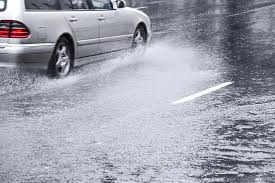This is the rainy season in Seattle and there is no shortage of water on the road. Seattle wet weather plus Seattle aggressive driving equals car accidents. It is a fact that people in Seattle drive way too fast in the rain. These people must not have been in a car accident yet because if they have been in one they would drive much slower in the rain. Whose fault is the car accident if you drive and slide out because of the rain?
 Sliding out or hydroplaning in the rain, is a term that describes cars losing traction with the ground. A car generally loses traction to the ground in wet weather where the car is driving too fast for conditions and there is too much water on the ground.
Sliding out or hydroplaning in the rain, is a term that describes cars losing traction with the ground. A car generally loses traction to the ground in wet weather where the car is driving too fast for conditions and there is too much water on the ground.
There is actually a law in Seattle that makes it illegal to drive too fast for conditions. The law states that – “No person shall drive a vehicle on a highway at a speed greater than is reasonable and prudent under the conditions and having regard to the actual and potential hazards then existing.”
Heavy rain qualifies as a potential hazard which requires you to drive slower than the speed limit. A reasonable and prudent person would drive slower if there is heavy rain and water standing on the road.
Therefore, if you hydroplane into another car, you are at fault for the personal injuries that the other person may suffer because of you driving too fast for conditions. Your insurance will cover any injuries and damage that the other person suffered in the car accident. If you have been injured, please contact a Seattle personal injury lawyer immediately for a free consultation.
